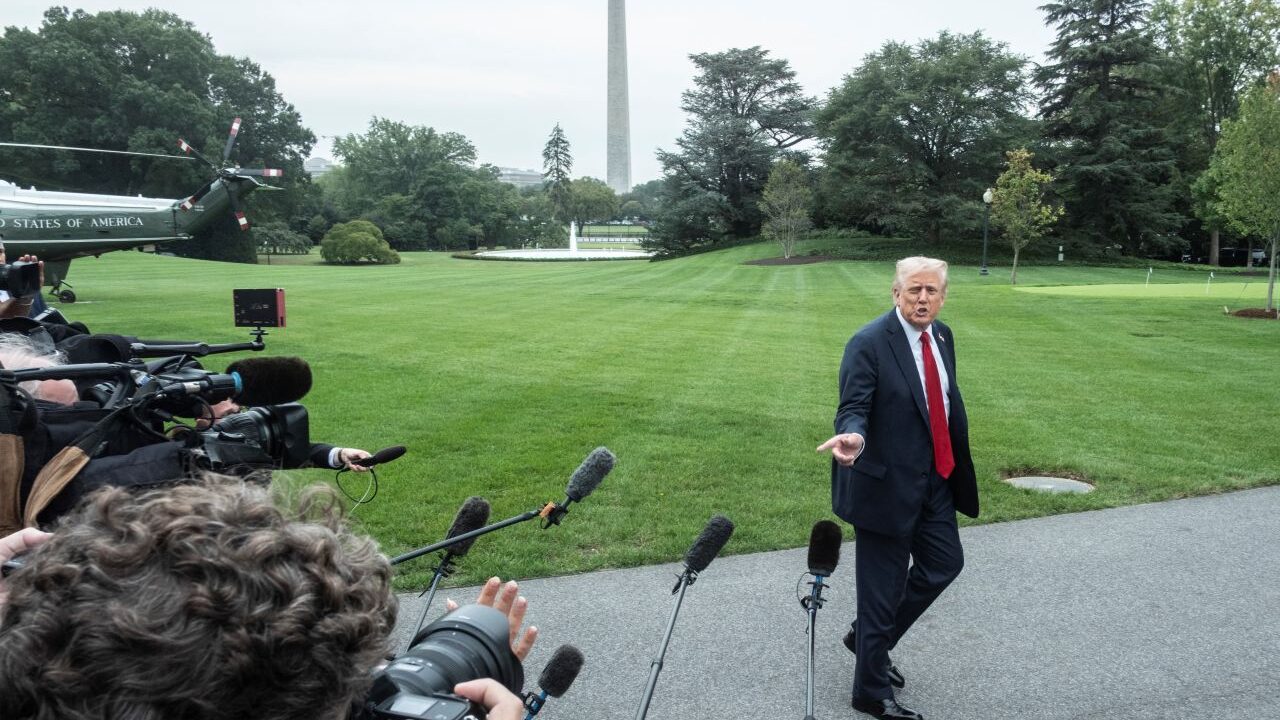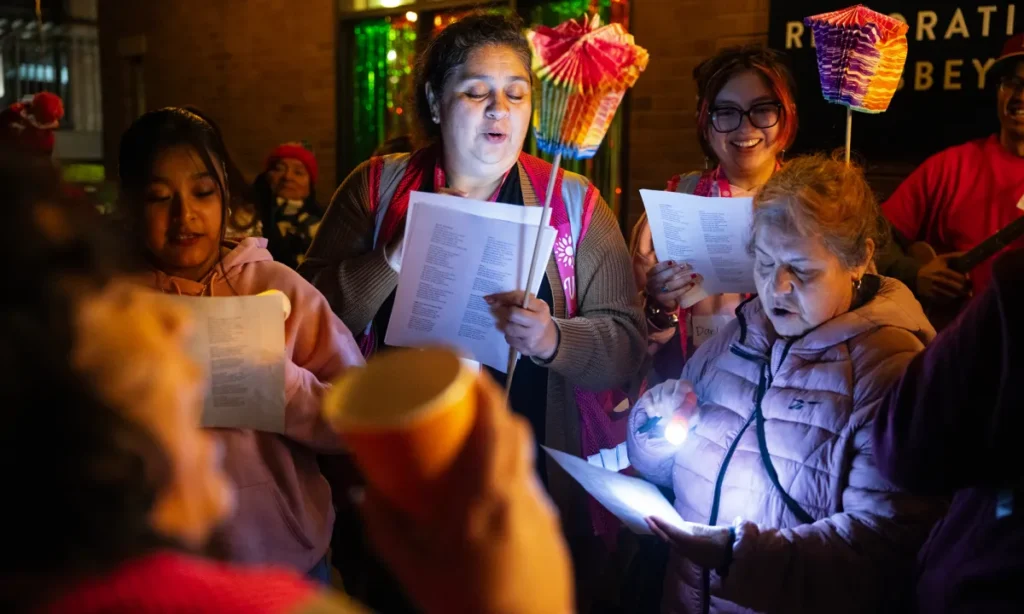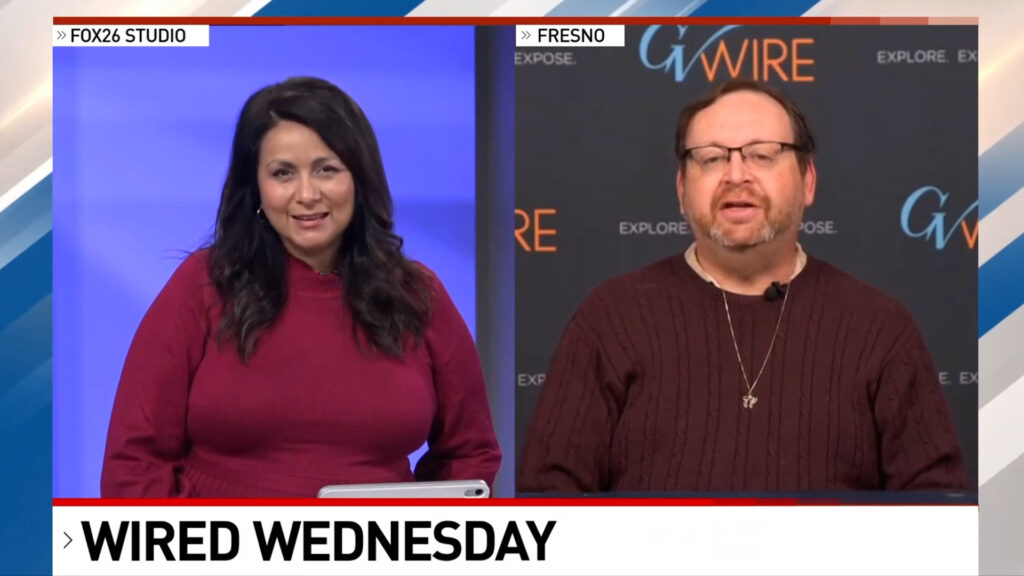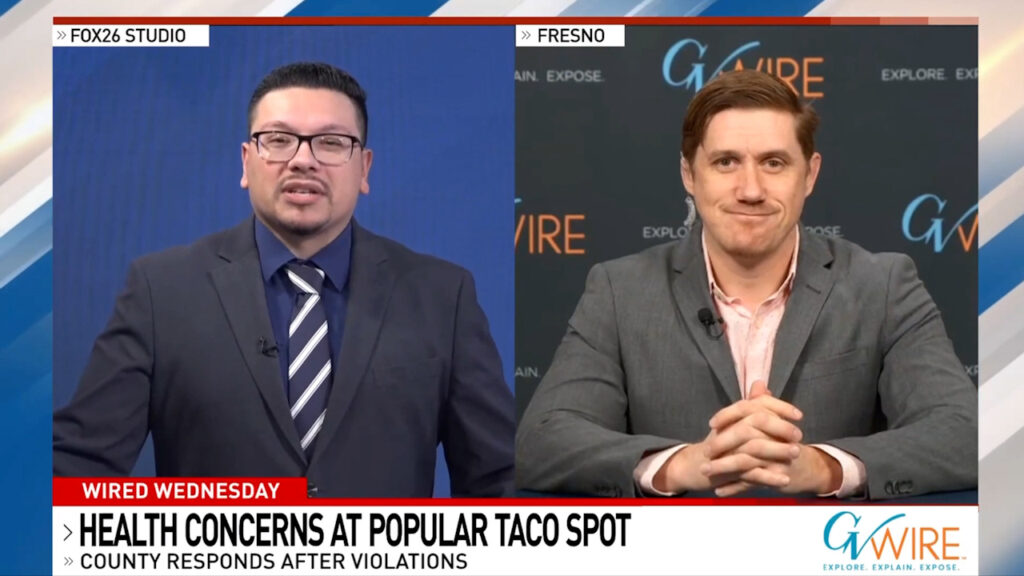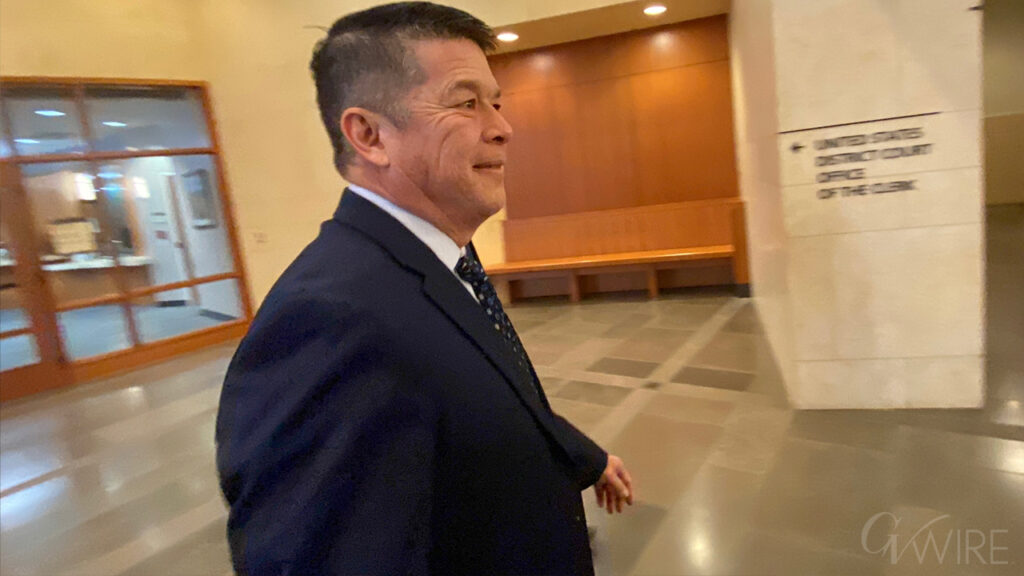President Donald Trump speaks to reporters after he arrived aboard Marine One on the South Lawn of the White House in Washington, Sept. 30, 2025. Mere hours after federal agencies came to a screeching halt, the Trump administration took steps to maximize the pain of the government shutdown, readying an imminent plan to lay off potentially droves of civil servants while halting billions of dollars in approved funds for Democratic-led states. (Pete Marovich/The New York Times)

- President Donald Trump says he will meet with his budget chief to determine which “Democrat agencies” he could try to cut.
- The president relishes the opportunity to use the shutdown as a tool to implement his agenda.
- Trump and his top aides have halted $26 billion in approved funding for infrastructure and green energy projects, primarily in Democrat-run states.
Share
|
Getting your Trinity Audio player ready...
|
WASHINGTON — President Donald Trump said Thursday that he would meet with his budget chief to determine which “Democrat agencies” he could try to cut, relishing the government shutdown as an “unprecedented opportunity” to achieve his agenda.
Trump did not specify in a post on social media whether he sought to slash spending or lay off federal workers, both of which he has threatened following the lapse in federal funding. Rather, the president said his discussion with Russell Vought, the White House budge director, would touch on “whether or not those cuts will be temporary or permanent.”
Trump’s comments reinforced his view that he sees political advantage in the governmentwide closure, which began at midnight Wednesday after congressional Democrats and Republicans failed to strike a deal. Rather than seek to broker a resolution, the president has focused on leveraging the standoff, aiming to carry out his long-sought reconfiguration of Washington while inflicting pain on his political adversaries.
“I don’t think it’s unreasonable for the president to use all the levers,” said Scott Bessent, the Treasury secretary, during an appearance Thursday on CNBC. He declined to offer specifics about the layoffs or cuts the president is considering. He acknowledged that a shutdown could hurt the U.S. economy.
Trump Halts $26 Billion, Mostly to Democratic States
On the first day of the shutdown, Trump and his top aides halted about $26 billion in previously approved funding for infrastructure and green energy projects, primarily in Democrat-run states. The administration appeared to single out New York, a state whose delegation includes Rep. Hakeem Jeffries and Sen. Chuck Schumer, the Democrats’ leaders in the House and Senate.
Vought also told Republican lawmakers on a call Wednesday that mass layoffs targeting federal workers were imminent, suggesting that the administration could focus on employees who serve in roles that do not comport with the president’s political agenda. Many federal workers are already furloughed, and others are forced to work during the shutdown without pay, prompting unions to sue to block the firings.
The White House declined to comment on the meeting.
For the president and Vought, their tactics marked an escalation in a cost-cutting campaign that began at the start of Trump’s second term and the early work of the Department of Government Efficiency, or DOGE.
Through more than eight months, they have dismissed droves of civil servants, closed agencies and canceled billions of dollars in spending, sometimes in ways that have tested the law and defied Congress. By December, the federal government is expected to employ 300,000 fewer workers than it did in January, a reflection of the administration’s massed firings and induced resignations.
And Trump and Vought have pursued a dramatic retrenchment in government spending, proposing a budget that would slash about $163 billion in the 2026 fiscal year, largely by eliminating a vast set of climate, education, health and housing programs, including some that benefit the poor.
In his social media post, Trump on Thursday referenced Vought’s work on Project 2025, the right-wing blueprint that similarly called for an overhaul of the federal government. In that document, Vought opined on the “existential need for aggressive use of the vast powers of the executive branch.”
This article originally appeared in The New York Times.
By Tony Romm/Pete Marovich
c.2025 The New York Times Company
RELATED TOPICS:
Categories

Pebble Is a Tiny Adventure Seeker With a Big Heart



